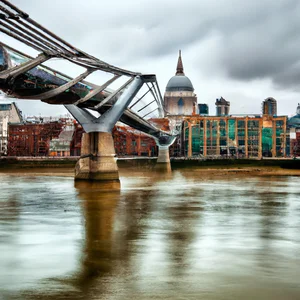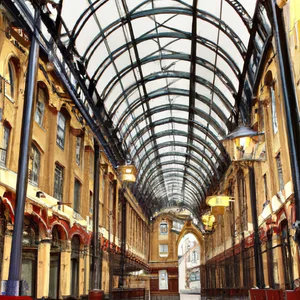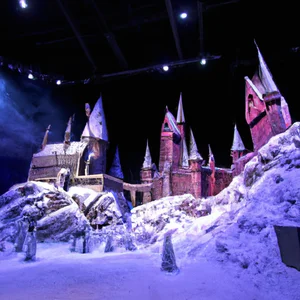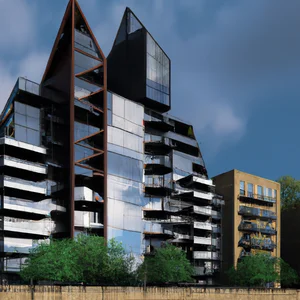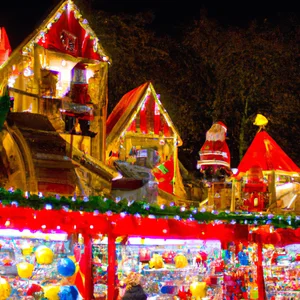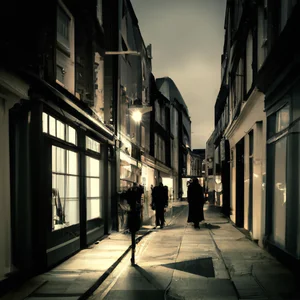Book your experience
Notting Hill Carnival: Complete guide to Europe's largest street carnival
Notting Hill Carnival: A tour of the wonders of the largest street carnival in Europe
Ah, the Notting Hill Carnival! Who has never heard of it? It’s like a sea of colors that overwhelms you, a party that embraces you and makes you feel alive. In short, it’s the largest street carnival in Europe, and if you’ve never been, well, you’ve missed out on something really special.
Basically, every year, at the end of August, London transforms into a sort of paradise for those who love music, dancing and, of course, food. It’s a bit as if the whole world came together on one street. And believe me, that’s not an exaggeration! The first time I went there, I felt like I was in one of those movie scenes where anything is possible. Just think of all those glitzy costumes, those people dancing and having fun like there’s no tomorrow… really, it’s contagious!
Now, I can’t say I know everything about Carnival, but I think it’s important to note that this celebration has deep roots in Afro-Caribbean culture. It’s like a big hug that celebrates diversity and unity, and makes you feel part of something bigger. And then, do we want to talk about the music? From calypso to reggae, passing through the frenetic rhythms of soca… it’s a real sonic journey that makes you want to dance even if you’re tired!
If you decide to stop by, get ready for a real flavor tour. I recommend you try the jerk chicken; it’s spicy at the right point and, trust me, it’s a real delight. My friend Laura, the first time she tasted fried foods, almost cried with joy! Now, this is the kind of experience that makes you say, “Wow, I didn’t know food could be this good!”
But be careful, not everything is always rosy. The crowds can be a little overwhelming at times. There are times when I felt like a fish in an aquarium, surrounded by people everywhere. So if you’re the quiet type, you might want to take a moment to breathe.
In conclusion, the Notting Hill Carnival is one of those experiences that, at least once in your life, you have to try. It’s like a breath of fresh air in a world that sometimes seems a little grey. So, if you take a few days off and want to have fun, don’t think too much: go to the carnival! And who knows, maybe you too will return home with a big smile like this and some anecdotes to tell.
Fascinating history of the Notting Hill Carnival
I remember the first time I set foot in the beating heart of the Notting Hill Carnival. It was an August afternoon and the air was vibrant with music, colors and delicious smells. While walking through the crowded streets, I came across an elderly gentleman telling carnival stories to a group of young people. His words transported me back in time, revealing the historical roots of this extraordinary celebration.
Origins and meaning
The Notting Hill Carnival began in the 1960s, as a response to the racial and social tensions affecting London. Members of the Caribbean community, particularly Jamaicans, organized an event to celebrate their culture and promote unity. The first official edition was held in 1966, and has since grown to become Europe’s largest street carnival, attracting millions of visitors every year.
Unconventional advice
If you want to immerse yourself in the true essence of carnival, try taking part in one of the dance rehearsals held in the months leading up to the event. These sessions offer a unique opportunity to learn traditional dance steps and understand the cultural meaning behind each movement. They are often open to the public and take place in community centers in Notting Hill.
Cultural impact
This carnival is not just a party; it is a powerful symbol of resilience and hope. It helped change the perception of Caribbean culture in Britain, becoming a celebration of identity and diversity. The float bands, lavish costumes and reggae and calypso tunes tell stories of a heritage that continues to be celebrated and respected.
Sustainability and responsibility
In recent years, the organizers of the Notting Hill Carnival have placed a strong emphasis on sustainability. From reducing waste to using eco-friendly materials for costumes, there is a growing awareness of the event’s environmental impact. Participating in the carnival also means embracing these sustainable practices, contributing to an environmentally friendly celebration.
An experience not to be missed
During Carnival, don’t miss the chance to visit the Caribbean Food Festival. Here you can enjoy authentic dishes such as jerk chicken, curry goat and festival, all prepared by local chefs carrying on unique culinary traditions. It’s a gastronomic experience that further enriches your understanding of Caribbean culture.
Myths and misconceptions
A common misconception is that Notting Hill Carnival is just one big party. In reality, it is a celebration deeply rooted in history and community. It is important to recognize that every dance, every costume and every dish tells a story, a connection to Afro-Caribbean traditions that deserve to be explored and respected.
Final reflection
As you prepare to experience the Notting Hill Carnival, ask yourself: how can a celebratory event like this influence your understanding of cultural diversity? Immersing yourself in this experience is not just about having fun, but also about embracing and respecting a history that continues to shape London.
The Notting Hill Carnival is much more than just an event; it’s a journey into the heart of a vibrant community and an opportunity to reflect on the beauty of diversity. Are you ready to discover this fascinating story?
Preparing for the carnival: what to know
A Personal Experience
I still remember my first time at Notting Hill Carnival. It was a warm summer afternoon and the vibrant atmosphere was palpable. As I walked along the bustling streets, I found myself surrounded by a myriad of colours, music and delicious smells. The preparations for the carnival were not only visible, but also tangible; the laughter, drums and conversations that intertwined created a unique harmony. That year, I learned that preparing for the carnival is just as important as participating in it.
Practical Information
The Notting Hill Carnival is held every year on the last weekend of August, attracting millions of visitors from all over the world. To fully enjoy the event, it is essential to check the official carnival website (nottinghillcarnival.com) for times, routes and safety guidelines. It is advisable to arrive early, as the streets fill up quickly and public transport becomes crowded. Wearing comfortable shoes and carrying a bottle of water is essential for getting through the day.
Insider advice
A little-known tip is to explore the side streets of Notting Hill. While many participants concentrate along the main route, the secondary streets offer a more intimate and authentic experience. Here you can discover small musical performances and street artists that are not found in the crowds. Don’t forget to bring a small camera: the best moments are often found away from the crowds.
Cultural and Historical Impact
The Notting Hill Carnival is not just a party; it is a celebration of the Afro-Caribbean roots of the London community. Born as a response to the racial unrest of the 1970s, the carnival has become a symbol of unity and resistance. Preparing for the carnival also means understanding its history and the cultural importance it has for the community, an aspect that enriches every experience.
Sustainability and Responsibility
This year, the carnival is taking a step towards sustainability, encouraging the use of eco-friendly materials for costumes and promoting recycling throughout the event. Participating responsibly also means respecting the environment and helping to keep the streets clean. Informing yourself about sustainable practices and carrying a waste container with you can make a difference.
Immersion in the Atmosphere
Imagine being enveloped in an explosion of colour: brilliant costumes dancing to the beat of thumping drums, aromas of Caribbean food mingling in the air. Carnival is a sensory experience that involves all your senses. Let yourself be carried away by the music and dancing, and don’t be afraid to join the party!
An Activity to Try
If you want to fully immerse yourself in carnival culture, attend a Caribbean dance workshop before the event. Many local dance schools offer free or paid courses, where you can learn the steps and rhythms that are part of the carnival tradition. This will not only enrich your experience, but allow you to connect with the local community.
Myths and Misconceptions
A common misconception is that carnival is just a celebration of music and dance. In fact, it is a deeply significant event that celebrates culture, history and identity. Preparing for carnival also involves understanding these challenges and the stories behind every costume and every tune.
A Final Reflection
As you prepare for the Notting Hill Carnival, ask yourself: How can I contribute to this celebration of culture and community? Every attendee has the opportunity to be part of something bigger, a story that continues to be made every year . The beauty of carnival lies in its ability to bring people together, and every step we take towards cultural awareness is a step towards a more inclusive society.
Vibrant costumes: symbol of cultural identity
I will never forget my first Notting Hill Carnival experience. As I walked along the colorful streets of Notting Hill, I was struck by an explosion of colour: bright feathers, shimmering fabrics and intricate patterns dancing in the sunlight. Each costume told a story, a piece of culture and tradition that was intertwined with London’s Afro-Caribbean identity. I remember being fascinated by a young woman wearing a costume inspired by African mythology, complete with mask and bright accessories. Her joy was contagious and perfectly represented the spirit of celebration of the carnival.
Preparation of costumes
Notting Hill Carnival costumes are more than just clothes; they are living works of art that require months of planning and creation. Each year, costume groups (or “mas bands”) begin designing their outfits as early as January, collaborating with local designers to bring extraordinary visions to life. Each costume is a symbol of cultural pride, often inspired by historical, mythological or social themes. According to the official Notting Hill Carnival website, the costumes are a way to celebrate the heritage and resilience of the Afro-Caribbean community in London.
Insider tip
A little-known tip is to arrive early at the carnival and visit the workshops of the various costume groups. Many of these, open to the public, offer an exclusive look at the creative process behind the making of these beautiful dresses. You can also interact with the designers and artists, discovering the details and stories behind each costume.
Cultural and historical impact
The Notting Hill Carnival has deep roots in the history of the Afro-Caribbean community in London, dating back to the 1960s as a response to racial tensions and a celebration of culture. Vibrant costumes aren’t just a way to have fun; they represent a form of resistance and an affirmation of cultural identity. Every year, the carnival brings together people of all ages and backgrounds, highlighting the importance of diversity and inclusion.
Sustainability in costumes
In recent years, many designers and costume groups have begun to make more sustainable choices, using recycled materials and ethical production techniques. This approach not only reduces environmental impact, but also offers an opportunity to raise awareness among participants of the importance of sustainability. During Carnival, you may notice costumes made from recycled plastic or natural fabrics, a sign that tradition is evolving responsibly.
An experience not to be missed
If you want to fully immerse yourself in carnival culture, try attending a costume-making workshop. Many of these events take place in the months leading up to the carnival, offering participants the chance to learn traditional techniques and help make a costume. It’s a unique opportunity to feel part of the celebration and take home a tangible memento.
Myths and misconceptions
A common misconception is that Carnival is just a celebration of excess. In fact, it is a celebration deeply rooted in culture and history, offering a platform for artistic expression and community solidarity. It is essential to approach this event with respect and curiosity, recognizing the meaning it has for the community.
In conclusion, the Notting Hill Carnival is not just an event to be seen, but an experience to be had. I invite you to reflect on how culture and identity manifest through art and celebration. What is the custom or experience that most struck you in a similar context?
Music and dance: the heart of the carnival
An unforgettable memory
I still remember the first day I stepped foot into the Notting Hill Carnival. The pulsating music of the drums, the infectious melodies of calypso and the frenetic rhythms of soca enveloped me like a warm hug. Walking along the decorated streets, I found myself dancing among the people, carried away by a collective energy that seemed to come from the depths of Afro-Caribbean culture. It was at that moment that I realized that music and dance are not just entertainment; they are the heartbeat of a community that celebrates its identity and history.
Practical information
The Notting Hill Carnival, which takes place every year over the Bank Holiday weekend in August, is a riot of sound and movement involving over two million people. Music is the underlying theme of each event, with stages hosting performances by local and international artists, and a variety of bands parading along the main route. Don’t forget to check the official carnival programme, available on the [Notting Hill Carnival] website (https://www.touristinformation.com/notting-hill-carnival), so you don’t miss the highlights.
An insider tip
A little-known tip is to arrive early so you can join one of the street gangs. Not only will you have the opportunity to dance to the live music, but you will also be able to wear the colorful costumes and feel an integral part of the celebration. Many of the gangs offer packages that include costumes, meals and access to restricted areas. It’s a fantastic way to fully immerse yourself in the experience.
Cultural and historical impact
The music and dance at Notting Hill Carnival are not just art forms, but represent an important act of resistance and celebration for London’s Caribbean community. The roots of the carnival date back to the 1960s, when it was founded to commemorate the fight against racial discrimination and to promote a strong cultural identity. The musical tradition, ranging from reggae to dub, has had a lasting impact on the global music scene, influencing genres and artists around the world.
Sustainability in the carnival
In an era where sustainability is crucial, many artists and organizers are trying to reduce the environmental impact of carnival. The use of recyclable materials for costumes and the promotion of separate waste collection practices are just some of the initiatives that are gaining ground. By participating in musical events or dance workshops, visitors can contribute to a more responsible experience.
An experience not to be missed
Don’t miss the opportunity to participate in one of the dance sessions that take place in the days before the carnival. It’s a fantastic way to learn traditional dance steps and feel part of the community, while building a connection with the local culture. Many dance studios offer special courses in preparation for the carnival.
Myths to dispel
A common misconception is that carnival is just a big party with no meaning. In reality, every dance and every musical note tells a story, a cultural heritage that deserves respect and attention. The music and dance at Notting Hill Carnival are expressions of joy, but also of struggle and resilience.
Final reflection
The Notting Hill Carnival is much more than just an event: it is a journey through the history, culture and identity of a vibrant community. What is your favorite song that makes you dance? Imagine dancing it in the streets of Notting Hill, surrounded by colors and sounds that tell stories of passion and resistance.
Better routes to explore the carnival
When I attended the Notting Hill Carnival for the first time, I found myself immersed in a sea of colours, sounds and smells dancing in the air. Walking through the cobbled streets, I remember passing one of the most spectacular floats, adorned with feathers and glittering beads, as the calypso beat enveloped me. But what made that experience truly unique was the discovery of alternative routes that allowed me to enjoy the carnival in a more intimate and authentic way.
Recommended routes
Portobello Road: Start your journey along the famous Portobello Road, where the colors of the markets mix with the sounds of the drums. Arriving here before the official start of the carnival will allow you to admire the craft stalls and taste local dishes.
Ladbroke Grove: Continuing along Ladbroke Grove, you will find some of the most iconic carts. Here, you can not only watch the festivities, but also discover local restaurants offering Jamaican and Caribbean specialties.
Westbourne Grove: If you want a quieter experience, head to Westbourne Grove. This area offers a privileged view of the festivities, away from the crowds. It’s a perfect place to take photos and soak up the atmosphere without feeling overwhelmed.
An insider tip
A little-known secret is to explore the side streets that branch off these main thoroughfares. Some of the best musical events and dance performances take place in the less crowded alleys, where local artists perform spontaneously. This will allow you not only to enjoy a more authentic experience, but also to interact directly with the performers.
Cultural impact and sustainable practices
The Notting Hill Carnival is a celebration of Afro-Caribbean culture, and the routes you choose to follow can influence your understanding of this heritage. Exploring the various corners of the carnival allows you to appreciate the diversity and richness of cultural traditions. Additionally, it’s vital to consider responsible tourism practices: use public transport, respect the environment and support local businesses to ensure the carnival can continue to thrive in the future.
An unmissable experience
Don’t miss the chance to join one of the dance workshops held during the carnival. These events will not only give you the chance to learn some Caribbean dance moves, but they will also allow you to connect with the local community and experience carnival from a whole new perspective.
Myths to dispel
A common misconception is that carnival is exclusively a noisy and chaotic celebration. In fact, it also offers moments of reflection and celebration of culture. Take the time to observe and listen to the stories behind each float and performance.
Reflecting on this experience, I ask myself: how can we continue to celebrate and honor the culture that underpins events like Notting Hill Carnival, while striving to preserve its authenticity and sustainability?
Authentic dining experiences not to be missed at Notting Hill Carnival
A journey through flavors and traditions
I vividly remember the first time I attended the Notting Hill Carnival. As I walked through the lively streets, surrounded by explosive colors and infectious melodies, my nose was hit by an irresistible scent. It was the call of Caribbean cuisine, an invitation to discover flavors that tell stories of identity and community. From that moment, I understood that carnival is not only a celebration of music and dance, but also a triumph of authentic culinary experiences.
What to expect
During the carnival, the streets of Notting Hill are transformed into a real gastronomic market, where local vendors offer traditional dishes such as jerk chicken, rice and peas and the famous curried goat. It’s an unmissable opportunity to savor genuine Caribbean cuisine, often prepared with recipes passed down from generation to generation. According to the London Evening Standard, there will be over 300 food stalls this year, making the carnival a true paradise for food lovers.
An insider tip
If you really want to immerse yourself in the food culture of the Notting Hill Carnival, I recommend looking for the smaller, less crowded stands. Often, these small kiosks are run by local families who use fresh ingredients and authentic recipes. Don’t be afraid to ask the seller to tell you the story behind the dish you’re about to order; these conversations can reveal fascinating anecdotes that will enrich your experience.
The cultural impact
The cuisine featured at Notting Hill Carnival is not just a way to eat, but a celebration of the Afro-Caribbean heritage that has profoundly influenced London’s food culture. Each dish is steeped in history and tradition, reflecting the experiences of the communities that have come together to create such an iconic event. It’s a time to honor cultural roots and appreciate the diversity that makes London so unique.
Sustainability and responsibility
As awareness around sustainability increases, many vendors at the carnival are making an effort to use local ingredients and eco-friendly practices. Look for kiosks that offer vegetarian or vegan options, which are not only more sustainable, but also delicious. This not only supports the environment, but also promotes more inclusive cuisine.
Immerse yourself in the flavors
Imagine biting into a piece of jerk chicken, marinated in aromatic spices and grilled to perfection, while the sound of reggae music envelops you. Or enjoy a plate of ackee and saltfish, a traditional Jamaican meal, while watching costumed participants dance. Every bite is a sensory experience that brings you closer to Caribbean culture.
Myths and misconceptions
A common misconception is that carnival food is only for carnivores. In In reality, Notting Hill Carnival offers a wide range of options for vegetarians and vegans, with dishes rich in flavor and nutrients. Don’t miss the opportunity to explore these delights!
A final reflection
As you prepare to visit Notting Hill Carnival, ask yourself: what flavors and stories will you take with you? Cuisine is a universal language that brings people together, and at Carnival, every dish is an invitation to discover and celebrate the rich cultural fabric of London. It is not just a culinary journey, but an experience that enriches the heart and mind.
Unique tip: how to avoid crowds
I remember the first time I attended the Notting Hill Carnival: the vibrancy of the colours, the infectious rhythm of the music and the energy of the dancing were overwhelming. But, alas, the crowds were also incredibly overwhelming. In that moment, I realized that to fully enjoy this cultural celebration, it is essential to know how to navigate the crowds, rather than being overwhelmed.
Practical information for avoiding crowds
To experience Notting Hill Carnival more peacefully, consider visiting the carnival on Monday morning. While many revelers flock to Saturday and Sunday, Mondays tend to be less crowded. According to information provided by the official carnival website and local organizers, the streets are more accessible and you can enjoy the parades in a more relaxed atmosphere.
- Get up early: Arriving around 9:00 will allow you to find the best seats to see the parades before the crowds build up.
- Choose the right route: Avoid main streets such as Portobello Road at peak times. Opt for side streets, where the vibes are just as authentic but less congested.
Unconventional advice
Here’s a secret that only true connoisseurs know: try to participate in the pre-carnival activities. During the previous weekend, there are more intimate and local events, such as concerts and dance workshops. These events will allow you to immerse yourself in Afro-Caribbean culture without being overwhelmed by the crowds.
The cultural impact of carnival
The Notting Hill Carnival is not just a party; it is a celebration of Afro-Caribbean culture and identity, which has its roots in the fight against discrimination and the search for a common identity. This annual event represents a collective storytelling that unites communities and celebrates London’s cultural diversity. Avoiding the crowds isn’t just about finding some quiet, but also about allowing yourself to connect more deeply with the history and stories of the people that make this event so unique.
Sustainability and responsibility
Considering that the carnival attracts millions of visitors, it is essential to practice responsible tourism. Bring a reusable water bottle with you and participate in local initiatives that encourage waste reduction. Many food stands, for example, offer discounts to those who bring their own container.
An activity worth trying
Don’t miss the chance to take part in a Caribbean dance workshop before the event. Discovering the movements and rhythms that will bring the carnival to life will allow you to appreciate live performances even more.
Myths and misconceptions
A common misconception is that carnival is just a messy street party. In reality, it is a well-organised event, with a rich cultural, artistic and gastronomic programme. It’s an opportunity to explore a key part of London’s history and celebrate culture in an authentic way.
Final reflection
Next time you think about attending the Notting Hill Carnival, ask yourself: how can I experience this in a more authentic and respectful way?. Avoiding the crowds will not only enhance your experience, but will also allow you to reconnect with the history and traditions that make this event so fascinating.
Sustainability at Notting Hill: a responsible carnival
The first time I attended the Notting Hill Carnival, I found myself immersed in a sea of colors and sounds, but what struck me most was the growing attention towards sustainability. In an event of this magnitude, where millions of people come together to celebrate every year, it is essential to consider the environmental and social impact that this celebration can have.
A responsible approach
In recent years, Notting Hill Carnival has made significant steps towards adopting eco-friendly practices. Since 2019, the organizers have implemented initiatives to reduce waste, promoting the use of biodegradable and recyclable materials. This change not only helps keep the neighborhood clean during and after the event, but also encourages attendees to reflect on the importance of a sustainable party.
Useful information: the official Notting Hill Carnival website offers annual updates on sustainable practices, including waste collection points and guidelines for participants. This resource is a great way to prepare and do your part.
An insider tip
If you want to experience the carnival responsibly, bring a reusable water bottle with you. Not only will you help reduce plastic waste, but you will also have access to various water refill points along the route. This simple gesture can make a big difference and will allow you to stay hydrated while enjoying the dancing and music.
The cultural impact of sustainability
The growing awareness around sustainability at Notting Hill Carnival reflects a wider cultural shift within the community. From a celebration of cultural identity, the carnival is transforming into a stage for discussing social and environmental issues. This not only enriches the experience for visitors, but also supports a message of collective responsibility.
Experience the atmosphere
To totally immerse yourself in the atmosphere of the sustainable carnival, I recommend you participate in one of the dance or art workshops organized by the local communities. Not only will you have the opportunity to learn about Afro-Caribbean traditions, but you will also be able to learn about the eco-friendly practices that are becoming an integral part of this event.
Myths to dispel
A common misconception is that an event of this magnitude cannot be sustainable. However, Notting Hill Carnival demonstrates that it is possible to celebrate culture and identity responsibly by engaging the community and participants in an active dialogue on sustainability.
In conclusion, attending the Notting Hill Carnival is not just an opportunity to have fun, but also an invitation to reflect on how we can all contribute to a more sustainable future. How do you think your presence can influence the event and the environment around you?
Meetings with local artists: stories behind the masks
During one of my visits to Notting Hill Carnival, I found myself chatting to a local performer, a young man called Malik, who was preparing for the parade. He wore a glittering, handmade costume inspired by Jamaican traditions. With enthusiasm and pride, he told me the story behind his creation: every feather, every pearl represented a piece of his cultural identity and family heritage. It was at that moment that I realized how deep the connection between art and culture was in this festival.
Creativity that comes alive
Carnival is not just a party, but also an important platform for artists and creators. Each year, hundreds of local talents collaborate to create costumes and artwork that capture the essence of Caribbean culture. A piece of advice: get yourself take the time to stop and chat with these artists, many of whom are willing to share their stories. Their passion and commitment make Carnival an authentic and palpable experience.
An insider tip
If you really want to soak up the atmosphere, try to attend one of the Carnival preparation workshops held in the weeks leading up to the event. Here, not only will you have the chance to see the costumes being made, but you can also try creating your own little piece of art, perhaps a mask or an accessory. It’s a unique way to connect with the local community and deeply understand their culture.
A living heritage
Notting Hill Carnival is a celebration of the resilience and creativity of African-Caribbean communities in the UK. Born as a way to express the culture and experiences of these communities in the 1960s, today it represents a symbol of unity and diversity. The participating artists not only tell personal stories, but carry on a tradition that has significant historical impact, transforming the streets of London into a stage of color and sound.
A sustainable approach
Many local artists, like Malik, are also embracing sustainable practices in their art. They use recycled materials and eco-friendly techniques to reduce the environmental impact of Carnival. Purchasing costumes and accessories from these artists not only supports the local economy, but also contributes to a more responsible Carnival. It’s a gesture you can do to support the community and the environment.
An experience not to be missed
If you want to experience something truly unique, look for an artist to collaborate with during Carnival. You could discover how to make a costume or how to create a mask, taking home not only a souvenir, but also a story to tell.
Dispelling the myths
A common misconception is that Notting Hill Carnival is just a chaotic street party. In reality, it is an event deeply rooted in culture and history, rich in meaning and artistic expression. Don’t let appearances fool you; behind every costume there is a story that deserves to be heard.
A final reflection
So, the next time you find yourself in the middle of a parade, remember: every mask and every costume tells a story. Are you ready to discover these stories and get involved in the magic of Notting Hill Carnival? Culture awaits you, ready to surprise you!
Afro-Caribbean traditions: a heritage to discover
An encounter that changed my perspective
I still remember my first day at Notting Hill Carnival, as the sun shone high in the London sky. As I walked through the crowded streets, a woman dressed in a beautiful costume of colorful feathers stated to me, “If you don’t know our history, you will never understand our carnival.” That phrase, simple but profound, resonated with me, pushing me to discover the Afro-Caribbean roots of this extraordinary event. Traditions that trace their origins to the celebrations of the Caribbean people, combined with African influences, form a rich cultural tapestry worth exploring.
The history and importance of traditions
The Notting Hill Carnival, which takes place every year on the last weekend of August, is not just a parade of color and sound, but a celebration of resilience and Afro-Caribbean culture. Born in the 1960s as a response to racial tensions and to promote the unity of the Caribbean community in London, the carnival has become a symbol of cultural pride and identity. Every costume, every dance and every musical note tells a story of hope and struggle.
An insider tip
Anyone who visits the carnival should take the time to listen to the stories told by the participants. Many of the artists and dancers are willing to share the meaning of their costumes and the traditions they represent. One way to do this is to join one of the guided tours organized by local communities, where you can learn details that often escape tourists. These first-hand experiences can offer a deeper and more authentic insight into Afro-Caribbean cultural heritage.
Sustainability and respect for culture
In an age where sustainability is crucial, it is important to remember that Notting Hill Carnival is committed to promoting responsible practices. Many participating groups are taking steps to reduce waste, use recycled materials for costumes and offer local, sustainable food options. Participating in this event is not only an opportunity to have fun, but also to support a celebration that respects the environment and culture.
An experience not to be missed
During Carnival, don’t miss the opportunity to try one of the many cultural activities, such as a calypso dance workshop or a Caribbean cooking class. These experiences will not only immerse you in the culture, but will also allow you to take a piece of it home.
Myths and misconceptions
A common misconception is that carnival is just a big party. While celebration and fun are essential elements, the essence of the Notting Hill Carnival is rooted in the celebration of Afro-Caribbean culture and traditions. It is an event that deserves respect and understanding, not just an occasion for dancing and drinking.
Final reflection
After experiencing the Notting Hill Carnival, I realized that every step you take through the colorful streets is a step through history. What does celebrating the culture of another community mean to you? This question pushed me to consider not only Carnival, but also my role in respecting and promoting the traditions that unite us.

 Architecture and Design
Architecture and Design Cities and Regions
Cities and Regions Culture and History
Culture and History Events and Festivals
Events and Festivals Fashion and Shopping
Fashion and Shopping Food and Wine
Food and Wine Nature and Adventure
Nature and Adventure Unique Experiences
Unique Experiences


















